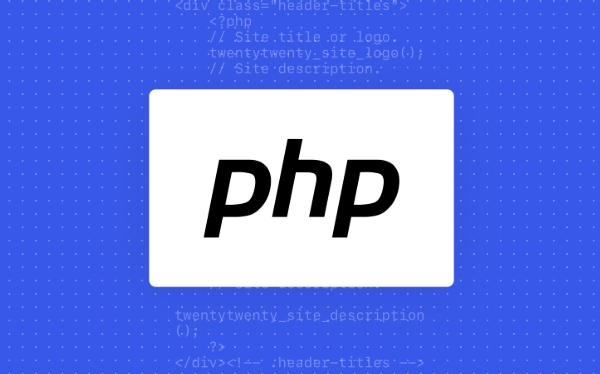The array_unique() function can be used to get unique values ??in a PHP array, using loose comparisons by default and retaining the first occurrence of key names. 1. Use array_unique($array) to deduplicate directly, but do not distinguish types by default, such as "1" and 1 are considered the same; 2. Adding the second parameter SORT_REGULAR can enable strict comparison; 3. The function retains the original key name by default and only removes duplicate values; 4. Deduplication logic can be implemented manually to support more complex scenarios, such as by traversing the array and using in_array($value, $seen, true) to make strict judgments.

When you want to get unique values ??from PHP arrays, there is actually a very direct way - use PHP's built-in array_unique() function. It can help you quickly remove duplicates in the array and return a new array containing only unique values. However, you may not pay much attention to some details, such as how it handles different types of data, whether key names are retained, etc.

How to use array_unique Basic usage
array_unique() is the most commonly used method, and the syntax is as follows:

array_unique($array);
It will iterate over each element in the array. If the value is found to be repeated, only the first occurrence will be retained, and the subsequent ones will be removed. By default, comparisons are loose (that is, they do not strictly compare types), so "1" and 1 will be considered the same.
For example:

$values ??= [1, '1', 2, 3, 2]; $unique = array_unique($values); // Output: [0 => 1, 2 => 2, 3 => 3] print_r($unique);
You can see that although 1 and '1' types are different, they are considered the same because of the default comparison method. If you want to distinguish types, you can add a second parameter:
array_unique($values, SORT_REGULAR);
This will make strict comparisons to avoid unexpected results caused by type conversion.
What should I do if I want to keep the key value corresponding?
Sometimes you not only want unique values, but also want to keep the original key. The good news is: array_unique() is the key reserved by default. That is to say, the key names in the returned array will not be reordered, but the duplicate values ??are removed.
for example:
$data = ['a' => 10, 'b' => 10, 'c' => 20]; $result = array_unique($data); // Output: ['a' => 10, 'c' => 20] print_r($result);
As can be seen, although the value of 'b' is the same as 'a' , 'a' is retained and 'b' is removed. Note this: the first key-value pair that appears is retained .
Other methods? It can also be implemented manually
Of course, if you want to write logic yourself to control more granular behavior, you can also do deduplication by traversing the array:
function getUniqueValues($array) {
$seen = [];
$result = [];
foreach ($array as $key => $value) {
if (!in_array($value, $seen, true)) {
$seen[] = $value;
$result[$key] = $value;
}
}
return $result;
} This function uses an intermediate array $seen to record the values ??that have appeared, and enables strict comparison by setting the third parameter of in_array() to true . This method is very useful when you need to customize the deduplication logic, such as deduplication based on a certain property of the object.
Let's summarize
- Use
array_unique()to be the simplest and most efficient - The default is loose comparison, and you can switch to strict mode if needed.
- The key name will be retained, and the duplicate value will only retain the first one
- It is not difficult to implement by yourself, and it is suitable for situations with special needs.
Basically all is it. Although the function is simple, it is easy to get stuck if you use it incorrectly.
The above is the detailed content of how to get unique values from a php array. For more information, please follow other related articles on the PHP Chinese website!

Hot AI Tools

Undress AI Tool
Undress images for free

Undresser.AI Undress
AI-powered app for creating realistic nude photos

AI Clothes Remover
Online AI tool for removing clothes from photos.

Clothoff.io
AI clothes remover

Video Face Swap
Swap faces in any video effortlessly with our completely free AI face swap tool!

Hot Article

Hot Tools

Notepad++7.3.1
Easy-to-use and free code editor

SublimeText3 Chinese version
Chinese version, very easy to use

Zend Studio 13.0.1
Powerful PHP integrated development environment

Dreamweaver CS6
Visual web development tools

SublimeText3 Mac version
God-level code editing software (SublimeText3)
 PHP Variable Scope Explained
Jul 17, 2025 am 04:16 AM
PHP Variable Scope Explained
Jul 17, 2025 am 04:16 AM
Common problems and solutions for PHP variable scope include: 1. The global variable cannot be accessed within the function, and it needs to be passed in using the global keyword or parameter; 2. The static variable is declared with static, and it is only initialized once and the value is maintained between multiple calls; 3. Hyperglobal variables such as $_GET and $_POST can be used directly in any scope, but you need to pay attention to safe filtering; 4. Anonymous functions need to introduce parent scope variables through the use keyword, and when modifying external variables, you need to pass a reference. Mastering these rules can help avoid errors and improve code stability.
 How to handle File Uploads securely in PHP?
Jul 08, 2025 am 02:37 AM
How to handle File Uploads securely in PHP?
Jul 08, 2025 am 02:37 AM
To safely handle PHP file uploads, you need to verify the source and type, control the file name and path, set server restrictions, and process media files twice. 1. Verify the upload source to prevent CSRF through token and detect the real MIME type through finfo_file using whitelist control; 2. Rename the file to a random string and determine the extension to store it in a non-Web directory according to the detection type; 3. PHP configuration limits the upload size and temporary directory Nginx/Apache prohibits access to the upload directory; 4. The GD library resaves the pictures to clear potential malicious data.
 Commenting Out Code in PHP
Jul 18, 2025 am 04:57 AM
Commenting Out Code in PHP
Jul 18, 2025 am 04:57 AM
There are three common methods for PHP comment code: 1. Use // or # to block one line of code, and it is recommended to use //; 2. Use /.../ to wrap code blocks with multiple lines, which cannot be nested but can be crossed; 3. Combination skills comments such as using /if(){}/ to control logic blocks, or to improve efficiency with editor shortcut keys, you should pay attention to closing symbols and avoid nesting when using them.
 How Do Generators Work in PHP?
Jul 11, 2025 am 03:12 AM
How Do Generators Work in PHP?
Jul 11, 2025 am 03:12 AM
AgeneratorinPHPisamemory-efficientwaytoiterateoverlargedatasetsbyyieldingvaluesoneatatimeinsteadofreturningthemallatonce.1.Generatorsusetheyieldkeywordtoproducevaluesondemand,reducingmemoryusage.2.Theyareusefulforhandlingbigloops,readinglargefiles,or
 Tips for Writing PHP Comments
Jul 18, 2025 am 04:51 AM
Tips for Writing PHP Comments
Jul 18, 2025 am 04:51 AM
The key to writing PHP comments is to clarify the purpose and specifications. Comments should explain "why" rather than "what was done", avoiding redundancy or too simplicity. 1. Use a unified format, such as docblock (/*/) for class and method descriptions to improve readability and tool compatibility; 2. Emphasize the reasons behind the logic, such as why JS jumps need to be output manually; 3. Add an overview description before complex code, describe the process in steps, and help understand the overall idea; 4. Use TODO and FIXME rationally to mark to-do items and problems to facilitate subsequent tracking and collaboration. Good annotations can reduce communication costs and improve code maintenance efficiency.
 How to access a character in a string by index in PHP
Jul 12, 2025 am 03:15 AM
How to access a character in a string by index in PHP
Jul 12, 2025 am 03:15 AM
In PHP, you can use square brackets or curly braces to obtain string specific index characters, but square brackets are recommended; the index starts from 0, and the access outside the range returns a null value and cannot be assigned a value; mb_substr is required to handle multi-byte characters. For example: $str="hello";echo$str[0]; output h; and Chinese characters such as mb_substr($str,1,1) need to obtain the correct result; in actual applications, the length of the string should be checked before looping, dynamic strings need to be verified for validity, and multilingual projects recommend using multi-byte security functions uniformly.
 Quick PHP Installation Tutorial
Jul 18, 2025 am 04:52 AM
Quick PHP Installation Tutorial
Jul 18, 2025 am 04:52 AM
ToinstallPHPquickly,useXAMPPonWindowsorHomebrewonmacOS.1.OnWindows,downloadandinstallXAMPP,selectcomponents,startApache,andplacefilesinhtdocs.2.Alternatively,manuallyinstallPHPfromphp.netandsetupaserverlikeApache.3.OnmacOS,installHomebrew,thenrun'bre
 Learning PHP: A Beginner's Guide
Jul 18, 2025 am 04:54 AM
Learning PHP: A Beginner's Guide
Jul 18, 2025 am 04:54 AM
TolearnPHPeffectively,startbysettingupalocalserverenvironmentusingtoolslikeXAMPPandacodeeditorlikeVSCode.1)InstallXAMPPforApache,MySQL,andPHP.2)Useacodeeditorforsyntaxsupport.3)TestyoursetupwithasimplePHPfile.Next,learnPHPbasicsincludingvariables,ech






